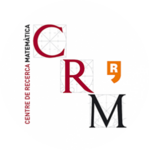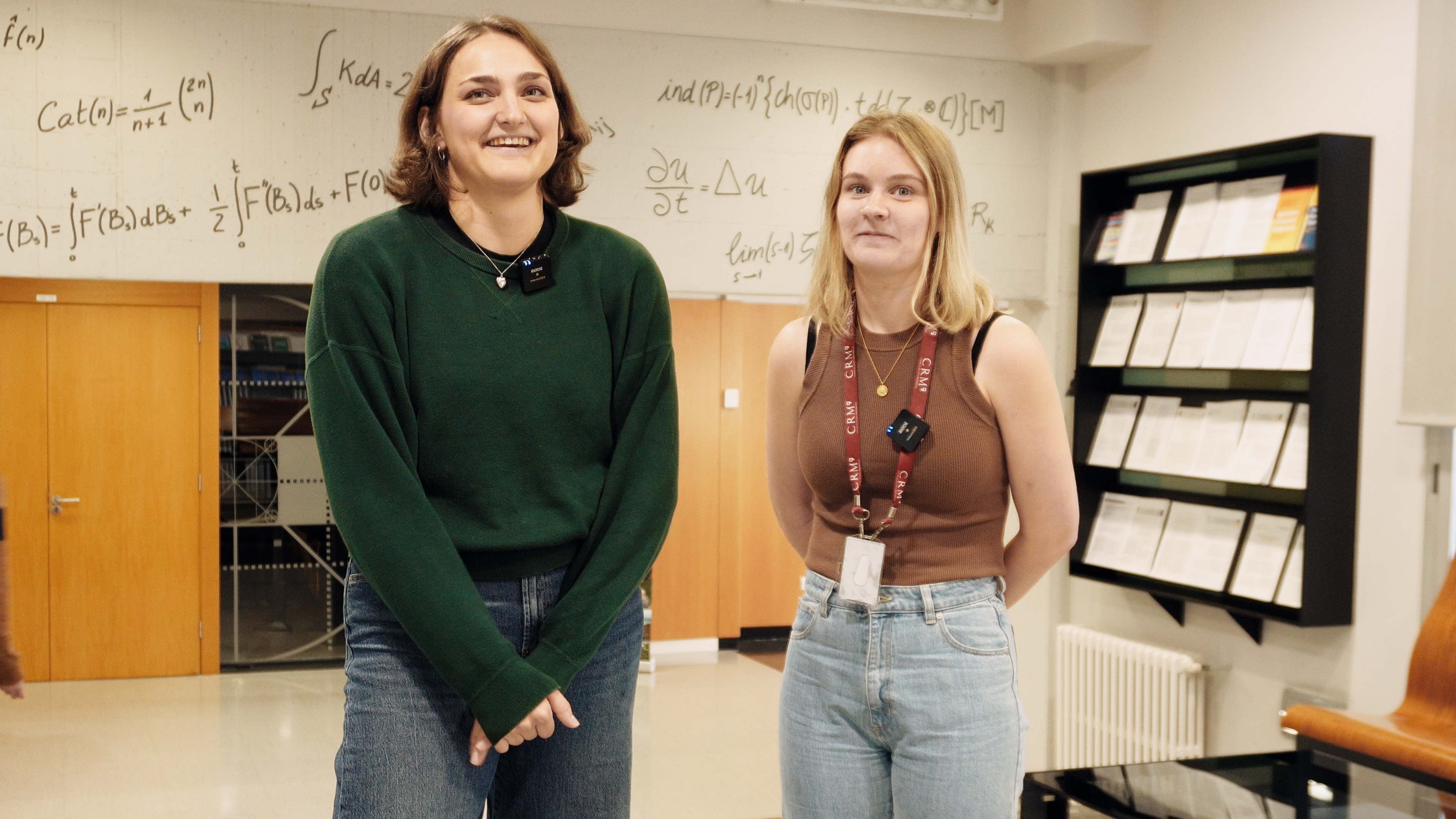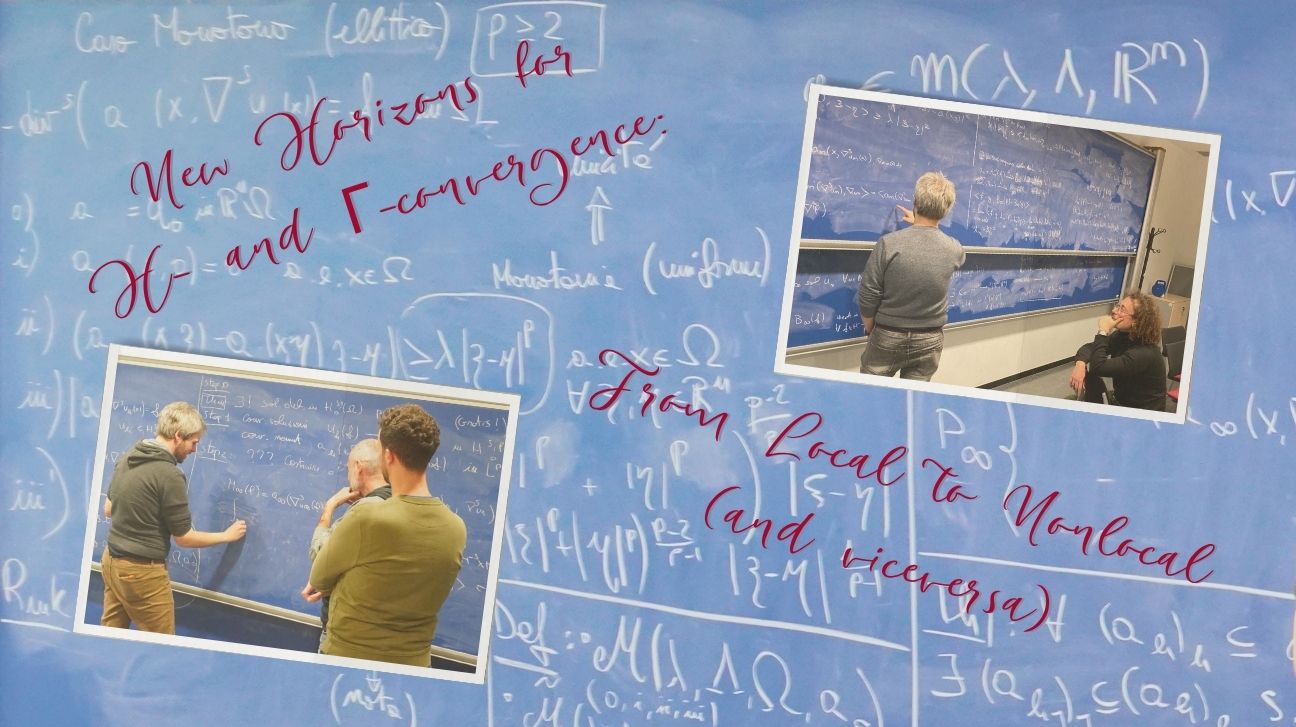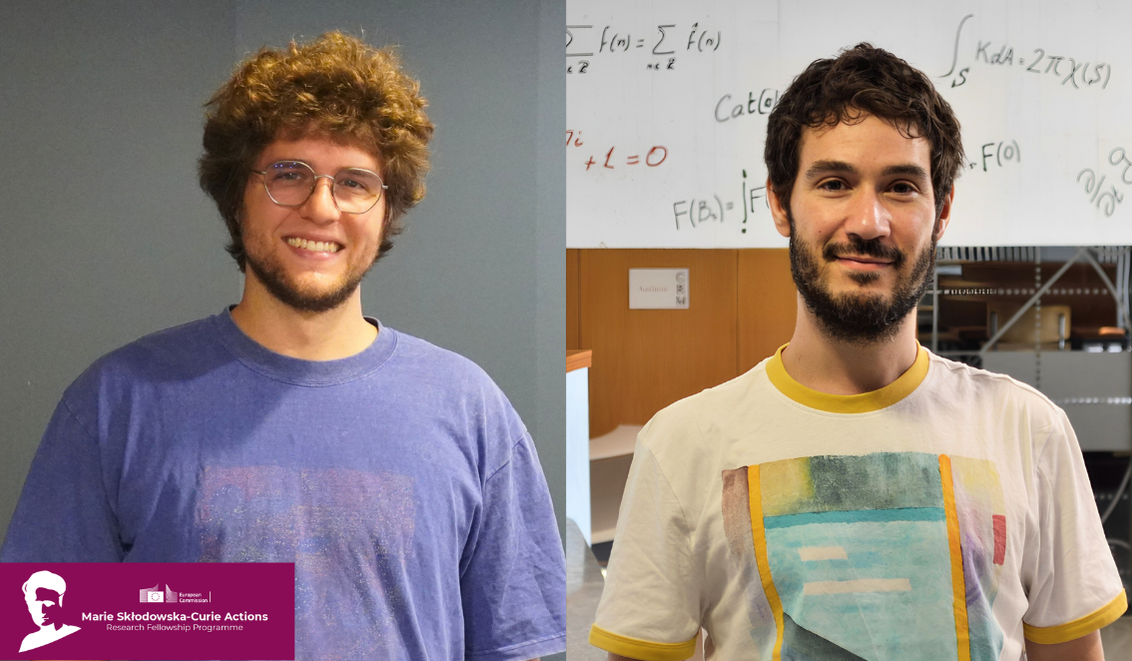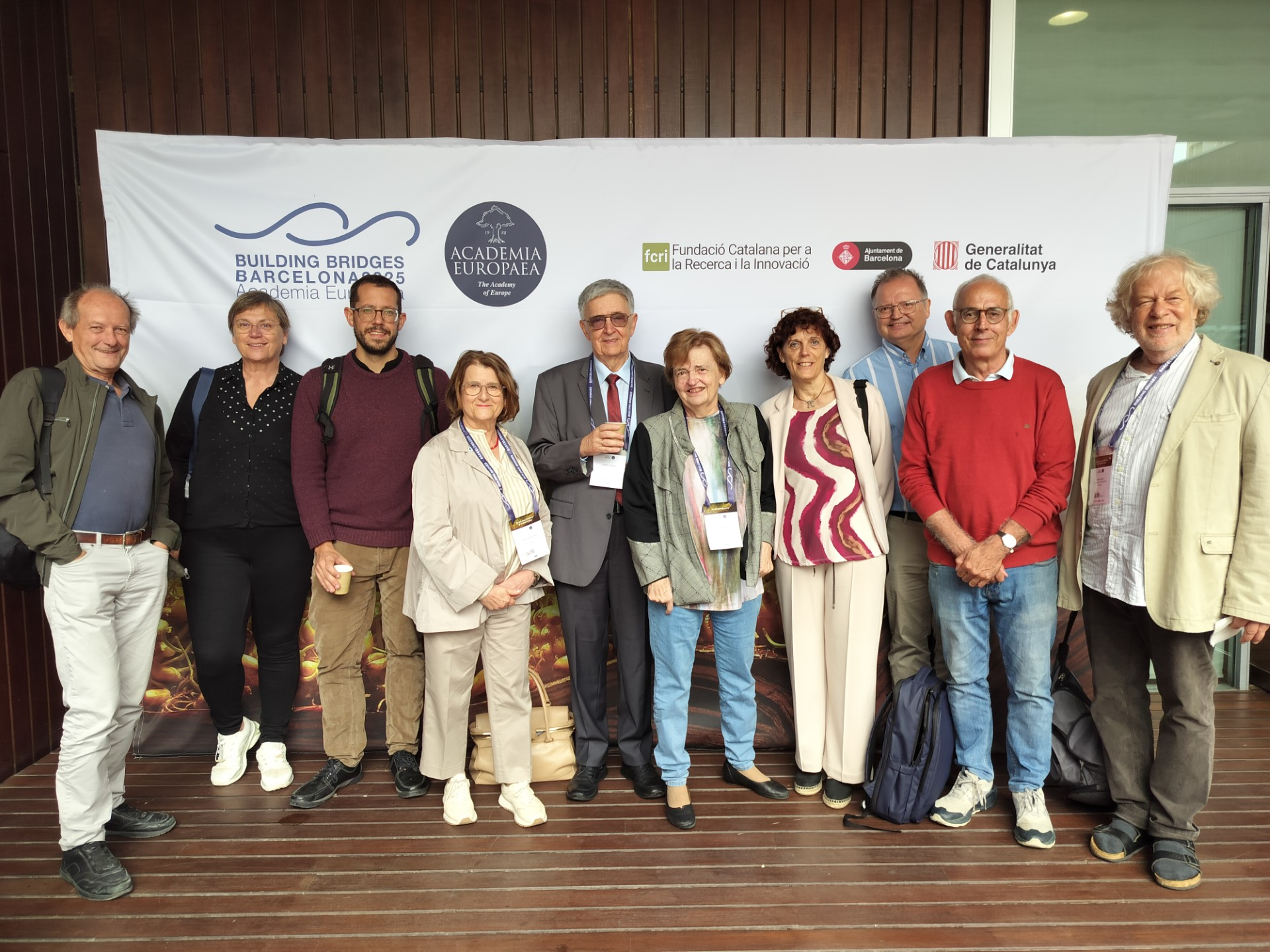
There is a moment, says new CRM doctorate Stefano Pedarra, when everything finally clicks. After months spent shaping a mathematical model, adjusting parameters, and running simulations of a biological process you’ve only encountered in papers or in conversations with specialists from another field, the laboratory data and your computer’s predictions suddenly line up. It is not chance; it is the sign that you’ve grasped the biology well enough to express it in mathematical form, and that the bridge you’ve built between both disciplines can hold its own weight.
“It was toward the end of my third year, between the end of the third and the beginning of the fourth. When everything was working, it surprised me to see the mathematical results align with the biological results. In a way, it’s what you expect, because if they didn’t, well, we might as well pack up and go home. But it was a moment of real satisfaction, seeing how things can actually fall into place.”
On October 3rd, Stefano Pedarra defended his doctoral thesis, conducted at the Centre de Recerca Matemàtica (CRM), titled Mathematical modeling of cancer-immune cell dynamics in vitro: the impact of cancer cell metabolism. The work was supervised by Tomàs Alarcón (ICREA-CRM), Josep Sardanyés (CRM), from the Mathematical Biology research group at CRM, and Javier Menéndez (IDIBGI). At its core, the thesis tackles a precise question: how does the metabolism of tumour cells affect the immune system’s ability to eliminate them? Addressing it carries clear medical relevance, but getting there demands mathematical models, computational simulations, and the slow, careful work of building a genuine dialogue between mathematics and biology.
Translating biological processes into mathematics
“The main goal of my thesis was to understand how the metabolic dynamics of tumour cells can influence the antitumour immune response,” Stefano explains. “From a mathematical perspective, I developed and analysed models describing the interaction between the tumour and the immune system, exploring how certain metabolic alterations can support or hinder the effectiveness of the immune response. In short, the goal was to integrate biological knowledge with mathematical tools to obtain a more quantitative and mechanistic view of a very complex process.”
It was not his first interdisciplinary project, but it was the first with such tightly coordinated supervision. “There was much closer contact with the biological side,” he recalls. And this involves a challenge that is not always obvious: communicating with people from other scientific areas. “Even though my thesis, mathematically speaking, did not use very complex tools, at least in the first part, I still had to shape the explanations and concepts so they could be understood without much mathematical background.” Explaining things to people from other fields is, in the end, a challenge.
And a learning experience.
“That bridge, you build it yourself in the moment when you’re doing the maths, because you’ve understood how the biological process works and you’ve been able to express it in a mathematical model that truly reflects it.”
The first year of the PhD was especially revealing. His early conversations with Javier Menéndez, head of the Cancer and Metabolism research group at the Girona Biomedical Research Institute Dr. Josep Trueta, helped him form an initial idea of how the biological system was structured. Based on that guidance, Stefano and his supervisors built a first model. But months later, in a new meeting, they realised they had misunderstood how the system worked. That discovery was not easy to accept. “It was frustrating, because I had spent a lot of time reading and maybe a couple of months developing and studying that model from a mathematical standpoint. Even so, it gave me a first contact with modelling, even if, in terms of results, those months were practically lost.”
Over time, however, the dialogue strengthened. “Little by little you understand things from the other field,” he explains, “but at the same time you realise that it’s not enough to just explain yourself better. As a researcher, you have to inform yourself, read, and study the topic. It’s a process that grows naturally, but it demands effort, because without that, there’s no way forward.” Time, in a PhD, is limited, and waiting for understanding to arrive on its own can be too slow.
One of the biggest surprises for him was discovering that the biological part was not just a background framework, but a living, essential piece of his work. “I thought the biological side was just context and that there wasn’t much more to understand, but I had to study, inform myself and read a lot.” Over time, he understood that the bridge between mathematics and biology does not appear on its own; it is built as you move forward. “You build that bridge while you’re doing the maths, once you understand how the biological process works and manage to express it in a model that truly reflects it.”
The years of work behind a PhD also bring moments of crisis, academically and personally. Stefano is clear: you must learn to ask for help. “It’s very important to recognise your own limits and ask for support, because if you don’t, you create unnecessary frustration. And academically, even more so.” He reminds us that PhD candidates are, by definition, researchers in training. “You’re in a learning process; you’re not a fully trained researcher. You need to keep a degree of autonomy and find ways to solve problems on your own, but you also need to be aware that you don’t know everything, and that’s why you have supervisors who must guide you.”
When asked what he would tell his five-year-younger self, Stefano answers without hesitation. He would say not to fear uncertainty, that it is all part of the path, and that you must trust the process. “A PhD is a long-distance race: there are moments of euphoria and moments of doubt, and that’s normal.” He would also remind his past self that asking for help is not a sign of weakness but an essential part of scientific work. “And above all,” he adds, “not to lose the curiosity that made him start.”
A new stage as a science communicator
Now that the PhD is behind him, Stefano has begun a new stage devoted to science communication. He says he felt “the need to stay connected to science, but from a different perspective.” This work allows him to remain linked to research “not to produce knowledge, but to communicate it, share it, and make it accessible.” He is especially motivated by the chance to convey “the beauty of science to people who may never have approached it before,” and he also sees a social dimension in this role: “Science communication is a way to inspire new scientific vocations and give meaning to knowledge.”
To future PhD students, Stefano advises finding a balance between what you research and who you research with. He recalls that the topic of the thesis is not always the decisive factor. “Maybe at the beginning, the topic of the PhD wasn’t something I had imagined studying, but over time, I came to really enjoy it. What truly made the difference was having supervisors who were there for me, who supported me, academically but also personally.” For this reason, he insists that “the human factor can completely change the PhD experience.”
Before jumping into a doctorate, Stefano recommends experiencing research from the inside to truly understand what it entails. “From the outside, you see scientists who seem exceptional, who know everything, who have the answer to absolutely everything and no obstacle in front of them. But the truth is that it isn’t like that.” Research is full of errors, unexpected problems, and results that often take much longer than expected. This is why he believes that “the PhD is not for everyone, nor does it have to be,” since everyone has aptitudes and skills that contribute to the whole in different ways. “Without that diversity,” he says, “the world couldn’t move forward.”
In the end, Stefano’s thesis is the story of a bridge. Not only between mathematics and biology, but also between curiosity and rigour, between abstractions and applications, between individual effort and collective support. A bridge built piece by piece, through mistakes, corrections, and moments when everything clicks. And when it holds, it lets you see that equations can speak of cells, tumours, and the stubborn human drive to understand the world a little better.
Pedarra, Stefano (2025). Mathematical modeling of cancer-immune cell dynamics in vitro: the impact of cancer cell metabolism. Doctoral thesis, Universitat Autònoma de Barcelona. Supervisors: Tomàs Alarcón (ICREA-CRM), Josep Sardanyés (CRM), Javier Abel Menéndez (IDIBGI).
Permanent link: https://ddd.uab.cat/record/320733
Alternative link: https://hdl.handle.net/10803/695473
|
|
CRM CommPau Varela
|
BAMB! 2025: Participants Return to the CRM for Research Stays
In October 2025, the Centre de Recerca Matemàtica hosted Josefine Meyer (ISTA) and Cate MacColl (University of Queensland) for a month-long research stay following their participation in the BAMB! Summer School. Despite studying vastly different subjects, from...
Connecting Shapes, Patterns, and Ideas: the Closing Conference on Combinatorial Geometries and Geometric Combinatorics
During five days, the CRM hosted the Closing Conference of the MDM Focused Research Programme on Combinatorial Geometries & Geometric Combinatorics. The event featured plenary talks, contributed sessions, and posters on topics from matroids and polytopes to...
Xavier Ros-Oton among the 65 most cited mathematicians in the world
ICREA professor at the Universitat de Barcelona and CRM affiliated researcher Xavier Ros-Oton appears on Clarivate's Highly Cited Researchers 2025 list, which this year reinstates the mathematics category after two years of exclusion.Citations are a strange way to...
New Horizons for H- and Γ-convergence: From Local to Nonlocal (and viceversa)
The researchers Maicol Caponi, Alessandro Carbotti, and Alberto Maione extended the H- and Γ-convergence theories to the setting of nonlocal linear operators and their corresponding energies. The authors were able to overcome the limitations of classical localization...
Diego Vidaurre joins the CRM through the ATRAE talent programme
Diego Vidaurre has joined the Centre de Recerca Matemàtica through the ATRAE programme, bringing his expertise in modelling spontaneous brain activity across multiple data modalities. His work focuses on understanding how the brain’s intrinsic dynamics shape...
El CRM a la Setmana de la Ciència: una ruta entre dones, formes i pensament
El CRM va participar en la 30a edició de la Setmana de la Ciència amb una ruta guiada que va combinar les biografies de dones matemàtiques amb obres d'art del centre, connectant ciència, història i creació artística.El 12 de novembre, el Centre de Recerca Matemàtica...
Els estudiants participants a la prova de preselecció de Bojos per les Matemàtiques visiten el CRM
La prova de preselecció de Bojos per les Matemàtiques va reunir estudiants de tot Catalunya a la UAB i al CRM, amb presentacions a càrrec de Montse Alsina, presidenta de la Societat Catalana de Matemàtiques, Núria Fagella, degana de la Facultat de Matemàtiques i...
Jordi Mompart highlights the role of artificial intelligence in sport at the XIII GEFENOL-DIFENSC Summer School
The XIII GEFENOL-DIFENSC Summer School gathered over thirty researchers from across Europe to explore how statistical physics helps explain complex phenomena in biology, ecology, networks, and social systems. In his closing lecture, Jordi Mompart (UAB) examined how...
Critical Slowing Down in Genetic Systems: The Impact of Bifurcation Proximity and Noise
An international collaboration including researchers from the Centre de Recerca Matemàtica (CRM) has shown that when several bifurcations occur close to one another, their interaction can dramatically amplify critical slowing down effect - the progressive slowdown of...
Two CRM researchers begin their Marie Skłodowska-Curie fellowships
Gustavo Ferreira and Tássio Naia, CRM postdoctoral researchers and new Marie Skłodowska-Curie fellows. Gustavo Ferreira and Tássio Naia, who joined the CRM in 2023 through the María de Maeztu programme, have started their Marie Skłodowska-Curie postdoctoral...
Matroid Week at CRM: A Collaborative Dive into Combinatorial Geometries
From October 13 to 17, 2025, the CRM hosted Matroid Week, a research school on combinatorial geometries and matroid theory. Courses by Laura Anderson and Geoff Whittle explored intersection properties and structural emergence in matroids. The event fostered deep...
László Lovász receives the 2025 Erasmus Medal in Barcelona
Mathematician László Lovász received the 2025 Erasmus Medal from the Academia Europaea yesterday at the PRBB in Barcelona, where he delivered the lecture “The Beauty of Mathematics”. Renowned for his work in graph theory and discrete mathematics, Lovász has shaped...

